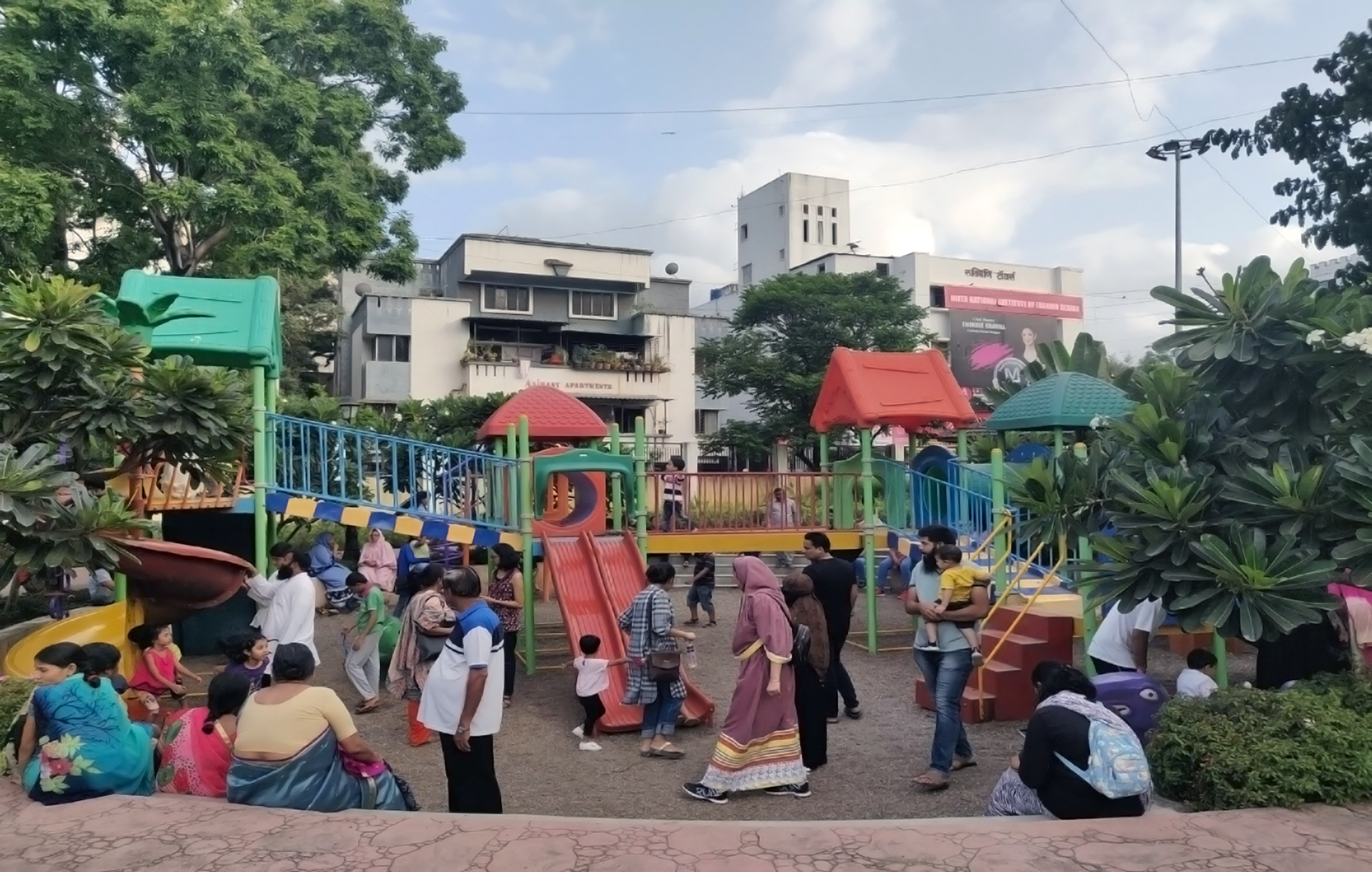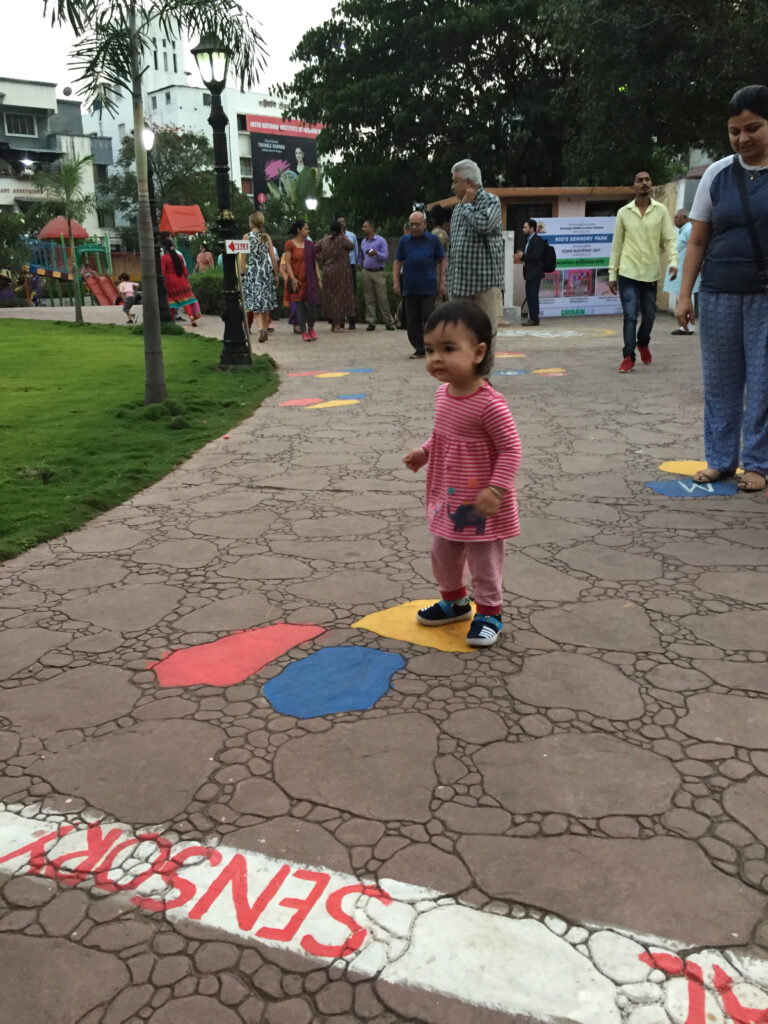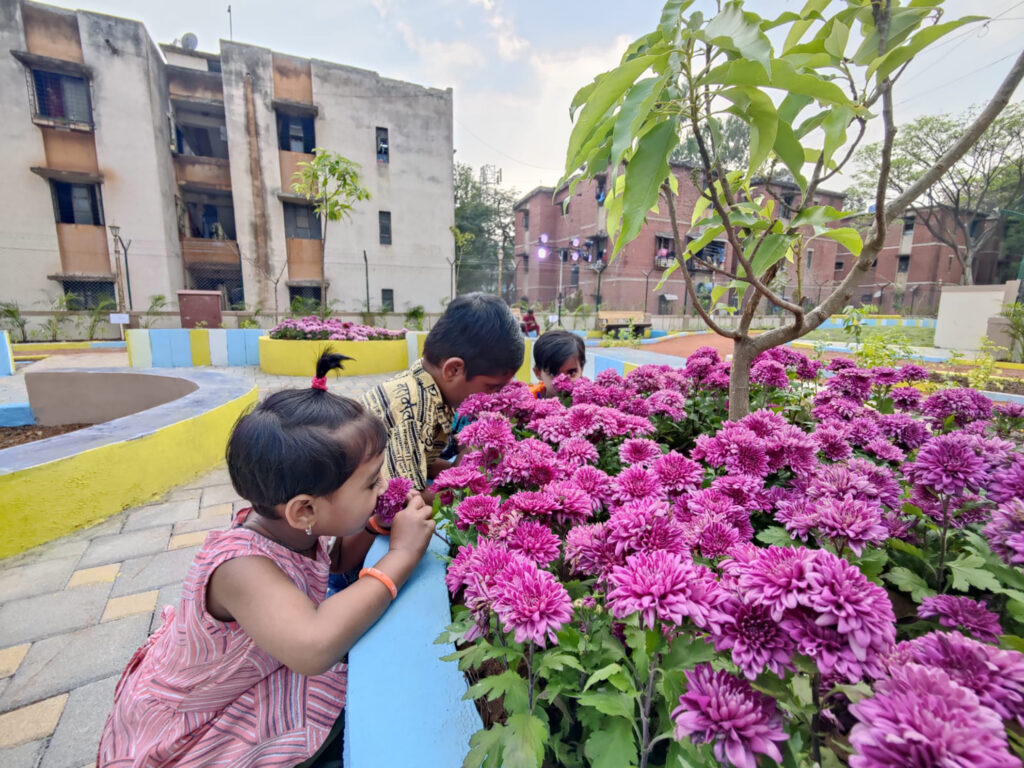Building-in behaviour change when designing public spaces
Pune shows why infrastructure projects need behavioural insights to succeed
Pune shows why infrastructure projects need behavioural insights to succeed
 Photo: Courtesy of Urban95 Pune, Pune Municipal Corporation/Bernard van Leer Foundation, Taru Leading Edge, and Ecofirst.
Photo: Courtesy of Urban95 Pune, Pune Municipal Corporation/Bernard van Leer Foundation, Taru Leading Edge, and Ecofirst.
Three-year-old Neha lives with her mother Vedica in a compact and congested high-rise building in Kondhwa, Pune, India’s seventh-largest city. Vedica is primarily responsible for Neha’s daily care, including taking her to play in the nearby park. Neha’s father engages with her briefly in the evening after returning from work, then spends the rest of his time watching television or on his phone.
Vedica understands the value of outdoor play and sensory stimulation, and its connection to young children’s cognitive development. However, she is worried about the safety and quality of local outdoor play spaces. During the Covid-19 pandemic she felt compelled to keep Neha at home, and got into the habit of handing her a digital device to keep her engaged while she does domestic chores.
Vedica and Neha’s situation is typical of many families in Pune, according to behavioural research we carried out in 2022. Children up to 6 years old account for one in nine of Pune’s population of over three million – and, in this sprawling city, many are deprived of the healthy stimulation of outdoor, nature and sensory-based play, something that helps children to interact and socialise with others.
This is not a new problem: an earlier round of research in 2018, as part of a baseline assessment when Pune joined the Urban95 initiative, also pointed to the need for more outdoor play opportunities for children play in public spaces such as parks, with 32% playing on the streets and the remainder playing only in enclosed spaces in the building where they live.
These findings led the Urban95 team in Pune to implement a temporary intervention of installing sensory play elements in a local park. However, because the research was limited to identifying infrastructure needs rather than also understanding behavioural factors, the intervention was not as successful as it could have been.

Photo: Courtesy of Urban95 Pune
The limits of infrastructural change The temporary sensory play space did have a small positive impact: observations showed that the proportion of park users aged 5 and younger on a typical weekday increased from 14% at baseline to 16% after completion of the intervention. The project also illustrated the risks of focusing only on infrastructural change, without understanding wider factors.
To begin with, the sensory play space faced resistance from other park users. Senior citizens in particular felt that encouraging young children to use this part of the park would interfere with their own enjoyment of the space for yoga and breathing exercises. In part this reflected a failure to intentionally understand how other stakeholders routinely use the park, and to communicate with them to remove misconceptions and alleviate their concerns.
Park maintenance staff also resisted the intervention – again, because their expectations about park usage had not been investigated and managed. They assumed their role involved confining children to areas of the park with designated play equipment, rather than allowing them to play all around the park, as the sensory play space was designed to encourage. Along with members of the local residents’ welfare association, the staff were concerned that young children would cause damage to grass and flowers.
Ultimately, while usage of the park by young children did increase, it was by a disappointingly small amount. The 2022 research, which focused on behavioural factors, found reasons that help to explain this. For example, we heard from many parents that they do not want their children to play in public parks because the parks are open to everyone, and they dislike the idea of their children interacting with peers from other socioeconomic strata.
From this experience, the team understood the limits of focusing exclusively on hardware solutions. They decided to focus future interventions more on understanding and addressing existing behavioural barriers and enablers.

Photo: Courtesy of Urban95 Pune
With support from the John Hopkins Center for Communication Programs and the Center for Communication and Change – India, the second phase of the programme began with a behavioural insights mapping exercise in March–April 2022.1 The idea was to generate insights into the enablers and barriers faced by caregivers using early childhood services near them, and service providers’ experience of operating, maintaining and providing early childhood services at different destinations.
The team used focus group discussions with mothers and fathers of children under 6 years of age, in-depth interviews with facility-based service providers and caregivers who do not attend the facility, and social mapping to gain an in-depth understanding of social and physical infrastructure from caregivers. Much was learned about various practical factors that discourage caregivers from taking their children to the park, from unclean toilet facilities to safety fears concerning stray animals.
“The idea was to generate insights into the enablers and barriers faced by caregivers using early childhood services near them.”
This exercise also gained valuable insights into social norms – for example, the idea that taking children to the park on weekdays is seen as a mother’s responsibility rather than something that a father or grandparents can also routinely do. This means, if the mother is busy with work or chores, the child does not get to go to the park. As with Vedica and Neha, we heard how screens have become a routine way for mothers to distract children while they do the household chores.
At the time of writing, these insights are feeding into the development of a broader and more holistic approach that uses the social ecological model to change behaviour around caregiving in general, and outdoor play in particular. This model highlights an individual’s interaction with and influence by his or her immediate environment: family, peer groups, community, society and policy at large.
“You need to understand barriers and enablers around the use of infrastructure, and that requires a behavioural insights approach.”
It is anticipated that this approach will focus on shifting attitudes and perceptions among caregivers and other stakeholders. This could include, for example, public communications campaigns on the dangers of excessive screen time and the benefits for young children of interacting with a wider range of family members and with peers from different socioeconomic groups; and capacity-strengthening workshops with park staff to help bring them on board for future interventions.
“If you build it, they will come” is an often-quoted line from a movie which points to the importance of building infrastructure. But our experience in Pune shows that building infrastructure alone is not enough – you need to understand barriers and enablers around the use of infrastructure, and that requires a behavioural insights approach.

Photo: Courtesy of Urban95 Pune
1 More about the work of the Johns Hopkins Center for Communication Programs and the Center for Communication and Change – India can be found at https://www.ccci.org.in
All references can be found in the PDF version of this article.
See how we use your personal data by reading our privacy statement.
This information is for research purposes and will not be added to our mailing list or used to send you unsolicited mail unless you opt-in.
See how we use your personal data by reading our privacy statement.